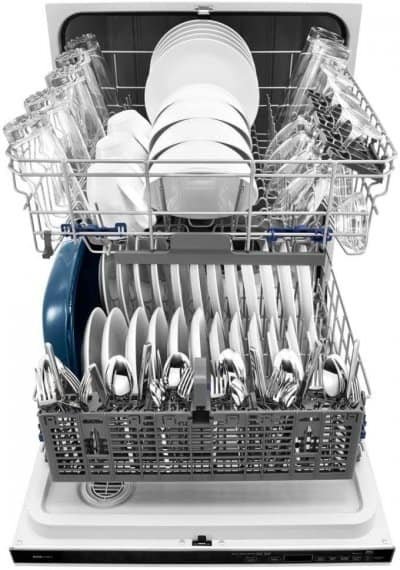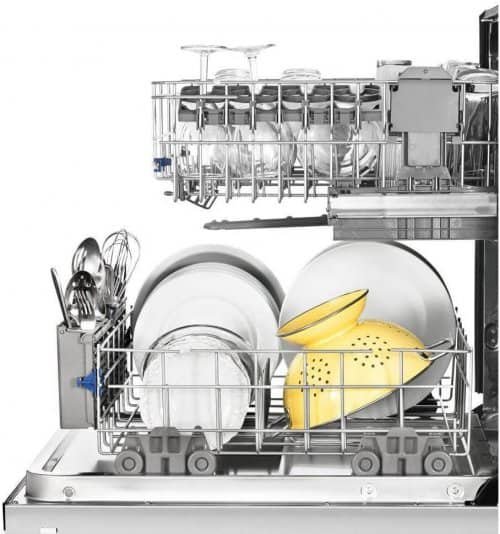Dishwashers have become an essential appliance in every modern kitchen, making it easier to clean dishes and utensils. However, with regular use, the dishwasher drain hose can get clogged, causing water to back up and flood the kitchen. To prevent this from happening, it is important to properly route the dishwasher drain hose. In this article, we will discuss the proper dishwasher drain hose routing and its importance in keeping your kitchen safe and clean.
Table of Contents
What is a dishwasher drain hose?
A dishwasher drain hose is a tube that connects the dishwasher to the sink or garbage disposal. The hose is responsible for draining the water out of the dishwasher after a cleaning cycle. It is important to ensure that the dishwasher drain hose is properly routed to prevent clogs and leaks.
Why is proper dishwasher drain hose routing important?
Improper dishwasher drain hose routing can lead to a number of problems. If the hose is not properly connected to the sink or garbage disposal, water can leak onto the floor, causing damage to the kitchen and potential hazards for those in the household. Additionally, if the hose is not properly secured, it can come loose and cause water to back up into the dishwasher, leading to flooding and potential mold growth.
Proper dishwasher drain hose routing can also improve the efficiency of the dishwasher. If the hose is too long or has too many bends, it can restrict the flow of water, causing the dishwasher to take longer to clean dishes and use more water than necessary. By properly routing the dishwasher drain hose, you can ensure that your dishwasher is operating at peak efficiency.

How to route a dishwasher drain hose
Step 1: Determine the location of the drain Before routing the dishwasher drain hose, it is important to determine the location of the drain. The drain can be located in the sink or in the garbage disposal. If the drain is located in the sink, you will need to remove the sink basket and connect the hose to the drain. If the drain is located in the garbage disposal, you will need to remove the knockout plug and connect the hose to the disposal.
Step 2: Measure the length of the hose The length of the dishwasher drain hose will depend on the distance between the dishwasher and the drain. Measure the distance between the two and add an extra 2-3 inches to allow for any bends or turns in the hose.
Step 3: Cut the hose to the appropriate length Using a pair of scissors or a utility knife, cut the dishwasher drain hose to the appropriate length. Be sure to cut the hose straight to ensure a secure connection.
Step 4: Secure the hose to the dishwasher Attach one end of the hose to the dishwasher by sliding the hose over the drain outlet and securing it with a hose clamp. Tighten the clamp with a screwdriver to ensure a secure connection.
Step 5: Route the hose to the drain Route the hose to the drain, ensuring that it does not have any kinks or bends that could restrict the flow of water. If the hose needs to make any turns or bends, use a hose elbow to ensure a smooth flow of water.
Step 6: Secure the hose to the drain Attach the other end of the hose to the sink or garbage disposal drain. Use a hose clamp to secure the hose to the drain, and tighten the clamp with a screwdriver to ensure a secure connection.
Step 7: Test the dishwasher Once the hose is properly routed and secured, test the dishwasher to ensure that it is draining properly. Run a cleaning cycle and check for any leaks or signs of water backing up into the dishwasher.
Tips for proper dishwasher drain hose routing
- Always use a high-quality dishwasher drain hose to ensure a secure connection and prevent leaks.
- Use hose clamps to secure the hose to the dishwasher and the
drain to prevent the hose from coming loose.
- Avoid sharp bends or kinks in the hose, as this can restrict the flow of water and cause clogs.
- Use a hose elbow to make any turns or bends in the hose, ensuring a smooth flow of water.
- Route the hose as high as possible under the sink, as this can prevent backflow and reduce the risk of clogs.
- Regularly inspect the hose for signs of wear or damage, and replace it if necessary.
Common mistakes to avoid
Improper dishwasher drain hose routing can lead to a number of problems. Here are some common mistakes to avoid:
- Not measuring the length of the hose properly: If the hose is too short, it can cause kinks and restrict the flow of water. If the hose is too long, it can cause backflow and leaks.
- Not securing the hose properly: If the hose is not secured properly, it can come loose and cause water to back up into the dishwasher, leading to flooding and potential mold growth.
- Not using a high-quality hose: Using a low-quality hose can lead to leaks and clogs, which can be expensive and time-consuming to fix.
- Not inspecting the hose regularly: Regularly inspecting the hose can help identify potential issues before they become major problems.
How Long Can a Dishwasher Drain Hose Be?
The length of a dishwasher drain hose depends on the type of hose and how it is installed. Generally, flexible hoses are recommended for most installations and can be up to 12 feet in length. If a solid metal hose is used, it should be no longer than 8 feet. It is important to install the hose correctly so that water does not back up into the dishwasher or other areas of the kitchen. The end of the hose should be positioned lower than the base of the dishwasher, with a loop at least 6 inches above the floor. This will ensure that water from the sink does not flow back into the dishwasher. Additionally, make sure that there are no kinks or bends in the hose which could impede water flow.
What is a Dishwasher High Loop and Why do you Need one?
A dishwasher high loop is a type of drain hose that prevents backflow from the dishwasher into the sink. It is a U-shaped section of hose that is installed between the dishwasher and the sink drain. The high loop helps to ensure that wastewater from the dishwasher will flow properly and not back up into the sink.
The high loop also acts as an air gap, which means it creates a physical barrier between two pieces of plumbing equipment to prevent contaminated water from flowing back into clean water supply lines. This helps to protect against contamination and potential health hazards caused by cross-contamination between sinks, toilets, and other fixtures in your home.
In summary, a dishwasher high loop is important because it helps to keep wastewater flowing properly and prevents contamination from entering your home’s water supply lines. It is an essential part of any kitchen plumbing system and should be installed correctly by a professional plumber for optimal performance.
How to Replace a Dishwasher Drain Hose?
Replacing a dishwasher drain hose is a relatively simple process. First, unplug the dishwasher from the power source. Then, locate the old drain hose and disconnect it from the dishwasher by unscrewing the clamp that holds it in place.
Next, measure out and cut a new drain hose to fit your dishwasher. Make sure that it is long enough to reach both the dishwasher outlet and the garbage disposal or sink drain.
Finally, connect one end of the new drain hose to the dishwasher outlet and secure it with a clamp. Connect the other end to the garbage disposal or sink drain and secure it with another clamp. Once you have finished connecting all of the pieces, plug in your dishwasher and test it out to make sure that everything works properly.
Conclusion
Proper dishwasher drain hose routing is essential for maintaining a clean and safe kitchen. By following the steps outlined in this article, you can ensure that your dishwasher is draining properly and operating at peak efficiency. Remember to measure the length of the hose properly, use high-quality materials, and regularly inspect the hose for signs of wear or damage. By taking these simple steps, you can prevent leaks, backflow, and potential hazards in your kitchen.

